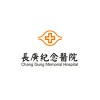
Combined Behavioral Approaches With Functional Electrical Therapy in Stroke Rehabilitation
Cerebrovascular AccidentThis project attempts to perform a randomized controlled trial to verify the efficacy and motor control mechanism of the proposed combined functional electrical therapy with distributed constraint-induced therapy or with robot-assisted Bilateral training.

Stroke Study: Operative Strategies to Reduce Cerebral Embolic Events During Coronary Artery Bypass...
StrokeOne of the most devastating complications of coronary artery bypass surgery (CABG) is postoperative stroke. While there are multiple causes of stroke after CABG, particles generated during handling of the aorta is believed to account for most neurologic effects. Handling of the aorta during CABG occurs several times during the operation. One strategy to reduce aortic handling is to avoid cardiopulmonary bypass altogether by using off-pump techniques (OPCAB). Another method is to avoid the use of aortic clamps and/or to use devices that do not require aortic clamping. This study will test the hypothesis that an off-pump (OPCAB) approach and devices to perform clampless surgery will result in the least amount of aortic handling and therefore the lowest incidence and frequency of neurologic adverse events.

Mesenchymal Stromal Cells for Ischemic Stroke
Ischemic StrokeThe purpose of this study is to determine if mesenchymal stem cells given by IV is feasible and safe in patients with recent ischemic stroke and to decide the maximum tolerated dose when given between 3-10 days after an ischemic stroke.

Reducing Risk of Recurrence
StrokeTIA2 moreAdults who have had a previous stroke or transient ischemic attack (TIA) remain at risk for having a second serious event, especially if they have uncontrolled blood pressure or cholesterol. However, many patients have difficulty following treatment recommendations for lowering blood pressure and cholesterol. The purpose of this research project is to evaluate the effect of 2 booster sessions of an educational counseling intervention on how well adults who have already participated in a 6-month clinical trial had a stroke or transient ischemic attack (TIA) are able to follow a treatment plan and control their blood pressure and cholesterol levels. We will also examine how effective this intervention is in improving adherence to diet, medication, and physical activity recommendations for adults who have had a prior stroke or TIA.

The PREVENTS Trial: The Preventing Recurrent Events in Veterans Navigating Transient Ischemic Attack...
StrokeTransient Ischemic AttackNational recommendations state that patients with a history of transient ischemic attack (TIA) or ischemic stroke should receive hypertension treatment, including antihypertensive medication and lifestyle modification, with a goal of reducing blood pressure (BP) to <120 mm Hg systolic BP and <80 mm Hg diastolic BP. Statin treatment and lifestyle modification is also recommended for post-stroke and post-TIA patients with elevated cholesterol levels or a history of stroke or TIA with an atherosclerotic cause. Despite the clear benefits of secondary stroke prevention, there is a gap between evidence and implementation in clinical practice. By a randomized controlled trial, the investigators will test whether a tailored, telephone-delivered transtheoretical model-based behavioral intervention will improve adherence to treatment in veterans with a history of TIA or stroke, thereby leading to better control of BP and cholesterol levels, as compared to an attention placebo. The primary specific aims of this project are to: determine whether a behaviorally tailored intervention (TI) can effectively lower BP after 6 months of counseling as compared to an attention placebo (AP) in veterans with a history of stroke or TIA assess whether the TI is effective in improving adherence to diet after 6 months of counseling in veterans with a history of stroke or TIA. Secondary aims are to assess whether the TI is effective in improving cholesterol levels in post-stroke veterans after 6 months evaluate whether the TI is effective in improving adherence to antihypertensive and lipid-lowering medications after 6 months of counseling in veterans with a history of stroke or TIA determine whether the TI is effective in improving adherence to exercise recommendations after 6 months. To answer this, veterans (n=190) with a history of stroke or TIA will be randomized equally to the TI, which will use the transtheoretical framework to provide 6 monthly counseling phone sessions about adherence to diet, medication, and exercise recommendations, and the AP, in which 6 monthly counseling phone sessions about non-stroke-related health topics will be provided. Participants will make in-person visits at baseline and 6 months. BP (3 measures taken at least 5 min apart) and dietary sodium are the primary outcomes, while secondary outcomes will be total cholesterol/high density lipoprotein ratio, adherence to antihypertensive and lipid-lowering drugs, and exercise adherence.

REGENESIS (US): A Phase IIb Prospective, Randomized, Double-blind, Placebo Controlled Study of NTx™-265:...
StrokeTo assess the safety and tolerability of NTx™-265 when given to acute ischemic stroke patients. To assess the neurological outcome in acute ischemic stroke patients treated with NTx™-265, when compared with patients given a placebo control.

A Single Center of Carotid Stenting With Distal Protection for the Treatment of Obstructive Carotid...
Heart DiseaseBrain Vascular Accident2 moreThe primary objective of this study is to assess the safety and effectiveness of stenting in the treatment of obstructive carotid artery disease. Secondary objectives are the assessment and standardization of optimal operator techniques and successful deployment and retrieval of the AngioGuard XP Distal Protection Device. This is a single center, prospective, open-label feasibility study. The study population will consist of patients with atherosclerotic obstructive or post-endarterectomy restenotic lesions in native carotid arteries. The intention is to include patients with both types of lesions.

Trial to Assess the Ocular Safety of Vorapaxar (SCH 530348) in Participants With Atherosclerosis...
AtherosclerosisIschemia2 moreThis study is designed to evaluate the long-term ocular safety of SCH 530348 (vorapaxar) in participants with established atherosclerotic disease who are enrolled into the TRA 2°P - TIMI 50 Study (P04737) (NCT00526474).

Study of Aspirin and TPA in Acute Ischemic Stroke
Acute Ischemic StrokeThis study will determine the safety of 500mg of aspirin added to IV TPA at standard doses to prevent re-occlusion of cerebral vessels after successful reperfusion. In ischemic stroke brain arteries are occluded either by an embolus originating in the heart or large vessels leading to the brain or by a process of acute thrombosis of the cerebral arteries over a ruptured atherosclerotic plaque. Rupture of the plaque exposes thrombogenic elements within the plaque and leads to accumulation and activation of platelets and induction of the clotting cascade eventually leading to acute thrombosis and occlusion of the artery. TPA is currently approved by the Food and Drug Administration to treat heart and brain problems caused by blockage of arteries. It activates plasminogen and leads to disintegration of the thrombus/embolus. It is effective only if begun within 3 to 4.5 hours of onset of the stroke because of potential deleterious side effects including life threatening symptomatic intracranial hemorrhage (sICH) when the drug is administered outside of this time window. Reperfusion of the ischemic brain (i.e. timely opening of the occluded artery) with TPA is associated with improved outcome. However, in about 33% of patients that have successfully reperfused after TPA the artery re-occludes within the first few hours resulting in worsening neurological symptoms and worse functional outcome. This re-occlusion is speculated to result from re-thrombosis over an existing ruptured atherosclerotic plaque. This is explained by the relatively short half life of TPA leaving the exposed ruptured plaque intact which leads to re-activation of platelets and clotting factors and re-thrombosis. Thus, we hypothesize that the addition of an antiplatelet agent to TPA would result in lower rates of re-occlusion after AIS. The FDA approved TPA for patients with AIS but discouraged the concomitant use of anti-platelet or anti-thrombotic drugs for the first 24hours after administration of TPA because of concerns that such therapy may result in increased rates of intracerebral hemorrhage. Aspirin is a well known platelet anti-aggregant that works by inhibition of cycloxygenase 1 and reduction in thromboxane A levels. It has a rapid onset of action and additional potential beneficial anti-inflammatory effects in patients with AIS. The international stroke study showed that acute treatment of stroke patients with 500mg of aspirin is safe and feasible and results in better outcome. Furthermore, the drug was safe in these circumstances with an ICH rate of only . Therefore, the purpose of this clinical trial is to examine the safety and efficacy of the combination of aspirin with rt-TPA in patients with AIS.

Boston Area Anticoagulation Trial for Atrial Fibrillation (BAATAF)
ArrhythmiaAtrial Fibrillation6 moreTo determine the benefits and risks of oral anticoagulant therapy in reducing embolic stroke and systemic emboli in patients with atrial fibrillation without rheumatic heart disease.
